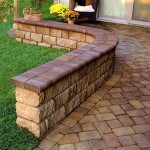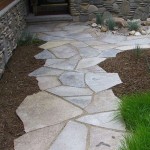Average Cost Of Adding A Cement Patio
Cement patios offer a durable and versatile outdoor living space, providing a foundation for relaxation, entertainment, and various activities. Understanding the average cost of adding a cement patio is crucial for homeowners planning to enhance their property’s value and functionality. This article will delve into the factors influencing the cost, break down the various expenses involved, and provide insights into potential cost-saving measures.
Factors Influencing Cement Patio Costs
The cost of adding a cement patio is not a fixed figure; it is influenced by several variables. The interplay of these factors determines the final price of the project. Before undertaking any construction, a thorough evaluation of these elements is essential for accurate budgeting and informed decision-making.
Size and Dimensions: The most significant driver of cost is the area of the patio. A larger patio requires more materials, including cement, reinforcing materials, and potentially excavation and grading. The dimensions of the patio, including its length, width, and thickness, directly correlate to the volume of cement needed. Professional contractors typically charge per square foot, so understanding the desired dimensions before seeking quotes is vital.
Cement Thickness: The intended use of the patio influences the required cement thickness. A patio designed for light foot traffic and occasional furniture can be thinner than one intended for heavy use, such as supporting outdoor kitchens or hosting large gatherings. Standard residential patios often have a thickness of 4 inches, but areas subject to vehicular traffic or heavy loads may require 6 inches or more. Increased thickness directly impacts the amount of cement and labor involved, thus affecting the overall cost.
Excavation and Grading: Preparing the site is a crucial step in patio construction. If the ground is uneven, sloped, or contains debris, excavation and grading are necessary to create a level and stable base. The complexity of this process depends on existing conditions. Removing large rocks, tree roots, or significant amounts of soil can increase labor costs. Proper grading is essential to ensure proper drainage, preventing water damage and extending the patio's lifespan. Cost estimates should include expenses related to excavation, grading, and disposal of removed materials.
Reinforcement: Reinforcing the cement slab improves its structural integrity and resistance to cracking. Common reinforcement methods include wire mesh, rebar, or fiber reinforcement. Wire mesh is a cost-effective option for basic reinforcement, while rebar provides superior strength for heavier loads or areas prone to ground movement. Fiber reinforcement is added directly to the cement mix and enhances its tensile strength. The choice of reinforcement method and the quantity used impact the overall material costs.
Finishing and Sealing: The desired finish significantly impacts the aesthetic appeal and cost of the patio. Options range from a simple brushed finish to more elaborate decorative treatments such as stamped concrete, exposed aggregate, or colored concrete. Stamped concrete involves using molds to create patterns that mimic natural stone, brick, or other materials. Exposed aggregate involves removing the top layer of cement to reveal decorative stones. Colored concrete requires adding pigments to the mix. Each finishing option has varying labor and material costs. Sealing the patio is essential to protect it from weathering, stains, and damage. Sealants are available in various types, each with different properties and prices.
Labor Costs: Labor accounts for a substantial portion of the overall cost. Hiring experienced and qualified contractors is crucial to ensure proper installation and a durable patio. Labor costs vary depending on the contractor's rates, the complexity of the project, and the region. Factors such as the amount of excavation, the complexity of the desired finish, and the overall project duration influence labor expenses. Obtaining multiple quotes from reputable contractors is essential to compare pricing and assess their qualifications.
Geographic Location: Material and labor costs can vary significantly depending on geographic location. Areas with higher living costs typically have higher labor rates. The availability and proximity of cement suppliers also influence material costs. Seasonal variations can also affect pricing; for example, cement prices may increase during peak construction seasons.
Permits and Inspections: Depending on local regulations, a building permit may be required for patio construction. Permit fees vary by municipality and can add to the overall cost. Inspections may also be required at various stages of the project to ensure compliance with building codes. Failing to obtain necessary permits can result in fines or project delays.
Breaking Down Cement Patio Expenses
To accurately estimate the cost of adding a cement patio, it's helpful to break down the expenses into specific categories. This detailed breakdown allows for a more transparent understanding of where the money is being spent.
Materials: Cement is the primary material cost. The amount of cement needed depends on the patio's size and thickness. Other material costs include reinforcement materials (wire mesh, rebar, or fiber reinforcement), aggregates (gravel or crushed stone for the base), forms (wood or metal to contain the cement during pouring), and finishing materials (sealants, stains, or stamping tools). Material costs can be estimated by consulting with local suppliers or contractors.
Labor: Labor costs typically encompass excavation, grading, formwork, pouring and finishing the cement, and applying sealant. Labor rates vary depending on the complexity of the project and the contractor's experience. Some contractors charge by the hour, while others charge a flat fee for the entire project. Obtaining detailed quotes from multiple contractors is essential to compare labor costs.
Equipment Rental: Certain tools and equipment may need to be rented, depending on the project's scope and the contractor's capabilities. This may include a concrete mixer, a vibratory plate compactor (for compacting the base), a power trowel (for smoothing the surface), and various hand tools. Rental costs vary depending on the type of equipment and the rental duration.
Site Preparation: Site preparation costs include excavation, grading, and removal of debris. If the site is particularly challenging (e.g., rocky soil, steep slopes), excavation costs may be higher. Waste disposal fees also contribute to site preparation expenses.
Finishing and Sealing: The selected finish significantly impacts the cost. Stamped concrete, for example, requires specialized tools and expertise, which increases labor costs. Sealants also vary in price depending on their quality and properties. Consider the desired aesthetic and durability requirements when budgeting for finishing and sealing.
Potential Cost-Saving Measures
While adding a cement patio can be a significant investment, several strategies can help reduce costs without compromising quality.
DIY vs. Professional Installation: Installing a cement patio is a labor-intensive project that requires specialized skills and knowledge. While DIY installation can save on labor costs, it's essential to assess one's capabilities and the complexity of the project. Improper installation can lead to structural problems, cracking, and premature deterioration, ultimately resulting in higher repair costs. For larger or more complex patios, professional installation is generally recommended.
Simple Finishing Options: Choosing a simple finish, such as a brushed finish, is a cost-effective alternative to more elaborate decorative treatments like stamped concrete or exposed aggregate. A brushed finish provides a functional and durable surface without the added expense of specialized materials and labor.
Value Engineering: Value engineering involves analyzing the project's design and identifying opportunities to reduce costs without sacrificing functionality or aesthetics. This may involve using less expensive materials, simplifying the design, or optimizing the construction process. Consulting with a qualified contractor or designer can help identify potential value engineering opportunities.
Negotiating with Contractors: Obtaining multiple quotes from reputable contractors and comparing their pricing and services can help negotiate a better deal. Be sure to ask contractors about their experience, qualifications, and warranty policies. A detailed contract that outlines the scope of work, materials, payment schedule, and other important terms is essential to protect both parties.
Timing of Construction: Construction costs can fluctuate depending on the time of year. Demand for materials and labor typically increases during peak construction seasons, which can drive up prices. Scheduling the project during off-peak seasons (e.g., fall or winter) may result in lower costs.
Material Sourcing: Researching and comparing prices from different material suppliers can help reduce material costs. Some suppliers may offer discounts for bulk purchases or special promotions. Consider purchasing materials directly from suppliers rather than through the contractor to potentially save money.

How Much Does It Cost To Pour A Concrete Patio 2025 Today S Homeowner

Guide How Much Does A Concrete Patio Cost

How Much Does A Concrete Patio Cost 2025

Guide How Much Does A Concrete Patio Cost

How Much Does A Concrete Patio Cost 2025

Cost To Build A Patio Installation Fixr Com

What Is The Cost Of Pavers Vs Concrete 2025 S Differences

How Much Does It Cost To Pour A Concrete Patio 2025 Today S Homeowner

Average Cost Of Concrete Patio Installation 7 Best Factors

2025 Patio Cost To Build And Install Angi
Related Posts








